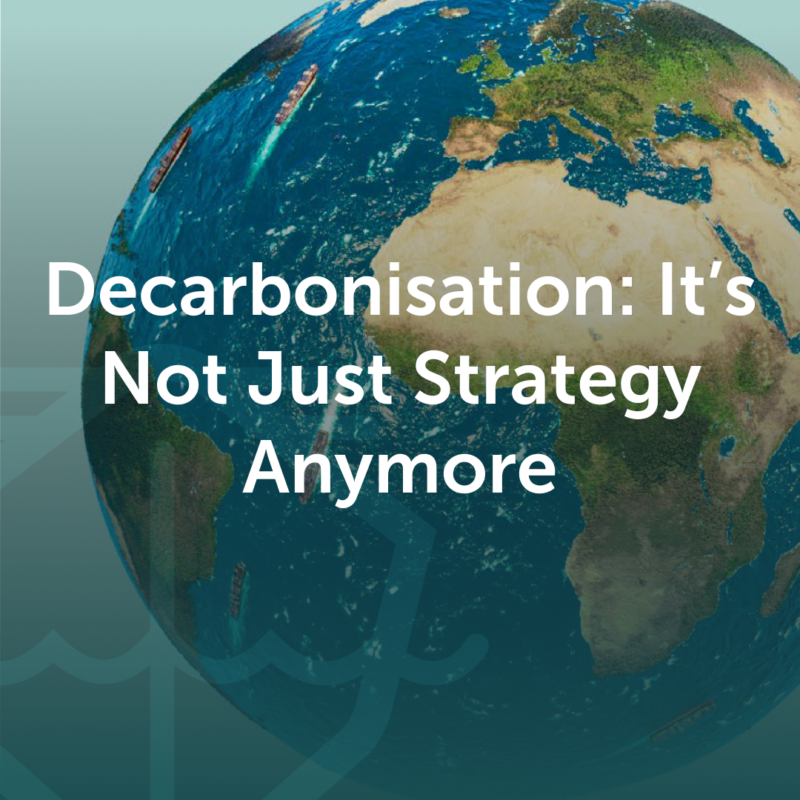In Case You Missed It: The Real Conversations at Global Marine Decarbonisation 2025
I recently attended the Global Marine Decarbonisation 2025 conference, a packed two days of discussions, debates, and a few much-needed reality checks. Like many in the industry, I’ve spent the past few years watching decarbonisation shift from a concept to an operational requirement. This event confirmed that the shift is now fully underway.

Compliance Pressure is Shaping Real Decisions
With FuelEU Maritime and the EU ETS now active, emissions performance is directly tied to cost. Fuel efficiency is no longer about marginal gains. Operators that fall outside allowable thresholds are already facing new reporting burdens and financial penalties. The IMO’s zone-based model adds another layer of complexity. Vessels operating with higher emissions are being pushed into the red zone, where costs escalate sharply.
In case you need a quick refresher on the topic, I’ve included a short description at the end of this blog.
The idea that ships need to optimise what they can now, came up repeatedly. There was no talk of silver bullets. Instead, conversations focused on combining small, proven steps: route planning, fuel management, and hull performance.
Hull Performance is Under the Spotlight
One of the most interesting topics for me across sessions was hull condition. CII was mentioned as a concern, but the discussion was broader. Several speakers flagged biofouling not only as a performance issue, but as a growing compliance and safety risk. Diver-based cleaning was highlighted as expensive and sometimes hazardous. Alternative methods, including in-service systems that prevent fouling before it starts, are gaining attention for their consistency and low disruption.
Siem Shipping shared one of the more concrete case studies, describing how hull form optimisation alone led to savings of seven tonnes of fuel per day. For many operators, those kinds of efficiency gains could make the difference between falling into the yellow zone or staying in the green.
Environmental Transparency is Commercially Relevant
Ponant’s presentation wowed the room (or at least me). Their zero-emission ship project is rooted in systems thinking: propulsion, energy use, materials, and onboard services. One important point they raised was how emissions reporting is now influencing customer expectations. When passengers book a voyage in advance, they expect to understand how that trip fits into the operator’s environmental story. Ponant has started building its customer communications around those expectations, without greenwashing.
The sentiment was echoed in the panel on customer engagement. Several operators noted that cargo owners are beginning to ask for verified emissions data. Some are willing to pay more, but only when they trust that the operational choices align with their own sustainability targets.
Fuel Availability Remains Uncertain
The sessions covering fuel strategy were less conclusive. While there is strong interest in methanol, ammonia, and biofuels, the infrastructure and supply chains are not yet consistent across regions. Operators with vessels calling at multiple ports may struggle to secure compliant fuels everywhere they go. This uncertainty is pushing many companies to invest in measures that reduce fuel burn across the board, regardless of fuel type. That includes hull efficiency, system automation, and voyage optimisation.
Practical Solutions are Gaining Ground
There is clearly no one-size-fits-all approach to decarbonisation. But what stood out was how quickly the conversation is shifting toward what can be implemented now. Operators are focused on taking control of the variables they can influence: drag, maintenance schedules, and onboard energy systems. New regulations will continue to evolve, but efficiency improvements at the hull level are already yielding measurable results.
Ready to see how much you can save with DragGone™? Try the Fuel and Emission Impact calculator!
A Clear Takeaway for Fleet Managers
For those managing ships day to day, this event boiled down to a simple point. Fuel costs, emissions penalties, and customer expectations are all moving in the same direction. Hull performance has become more than a technical consideration. It now plays a direct role in financial outcomes, regulatory standing, and commercial positioning.
FuelEU Maritime, EU ETS for Shipping and IMO’s Zone-Based Models Explained
FuelEU Maritime is a European regulation that came into effect in 2025. It sets rules on how clean the fuel used by ships must be when they visit EU ports. The goal is to reduce the amount of greenhouse gases (like CO₂) emitted by vessels over time. Every ship must track what kind of fuel it uses and how much, and meet specific targets for lowering its carbon intensity (how much pollution is produced per unit of energy used).
If a ship’s fuel mix doesn’t meet those standards, the owner faces financial penalties. So the cleaner the fuel, the fewer the fines.
The EU Emissions Trading System (ETS) was originally created for land-based industries, but now includes shipping. Here’s how it works:
– Every tonne of CO₂ a ship emits has a cost.
– Ship operators must buy emissions allowances based on how much they pollute.
– If they emit less, they save money. If they emit more, they pay more.
It turns carbon emissions into a cost on the balance sheet. This system is already being phased in, and by 2026, shipowners will be liable for 100% of emissions related to voyages into or out of EU ports.
This model is part of the International Maritime Organization’s (IMO) evolving regulations. It divides ships into three zones:
Green Zone: Very low emissions. Ships in this category may earn compliance credits that could potentially be sold to others.
Yellow Zone: Ships that are close to the target but not quite meeting it. These operators either pay a moderate fine or buy cleaner fuel to improve performance.
Red Zone: High emissions. Ships in this zone face steep fines, up to $380 per tonne of excess CO₂.
This approach is designed to push operators toward using cleaner fuels or technologies. It also creates a market where low-emission ships can sell their surplus compliance credits to higher-emitting ones
.

Dr Sasha Heriot
PRODUCT BUSINESS DEVELOPMENT MANAGER
Dr. Sasha Heriot, with a Ph.D. in Physics from the University of Sheffield, is a seasoned expert in bringing new products to market in the maritime industry.